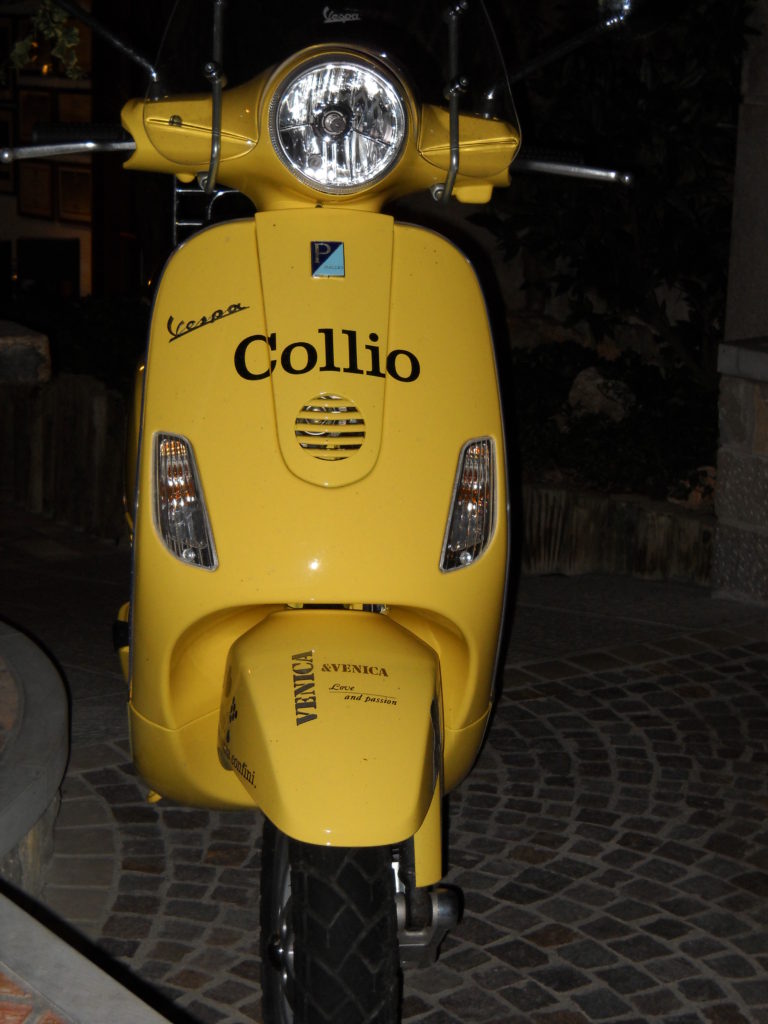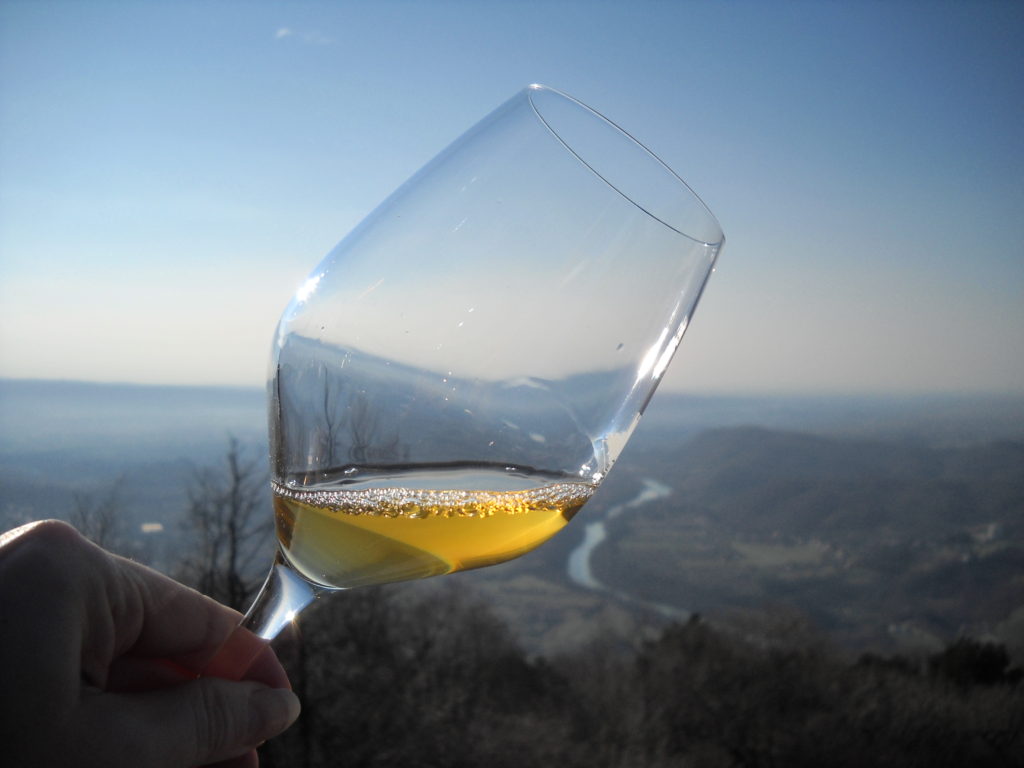
I was recently invited to take part in a virtual tasting featuring the wines of Collio, an area I had had the pleasure of visiting in December 2010. With nearly a decade since that first introduction, I was eager to reacquaint myself with these wines. In addition to meeting with various winemakers on our trip, we had the opportunity to steep ourselves in the culture of the area. And, as we were reminded during the virtual event, it is this unique and varied culture that permeates the wines themselves. Of course, beyond the cultural influences, all wines are a direct result of the climatic conditions in which they are grown and Collio is no exception. Yet we were advised that, like an orchestra playing a symphony, the wines needed all of the instruments to fully shine.
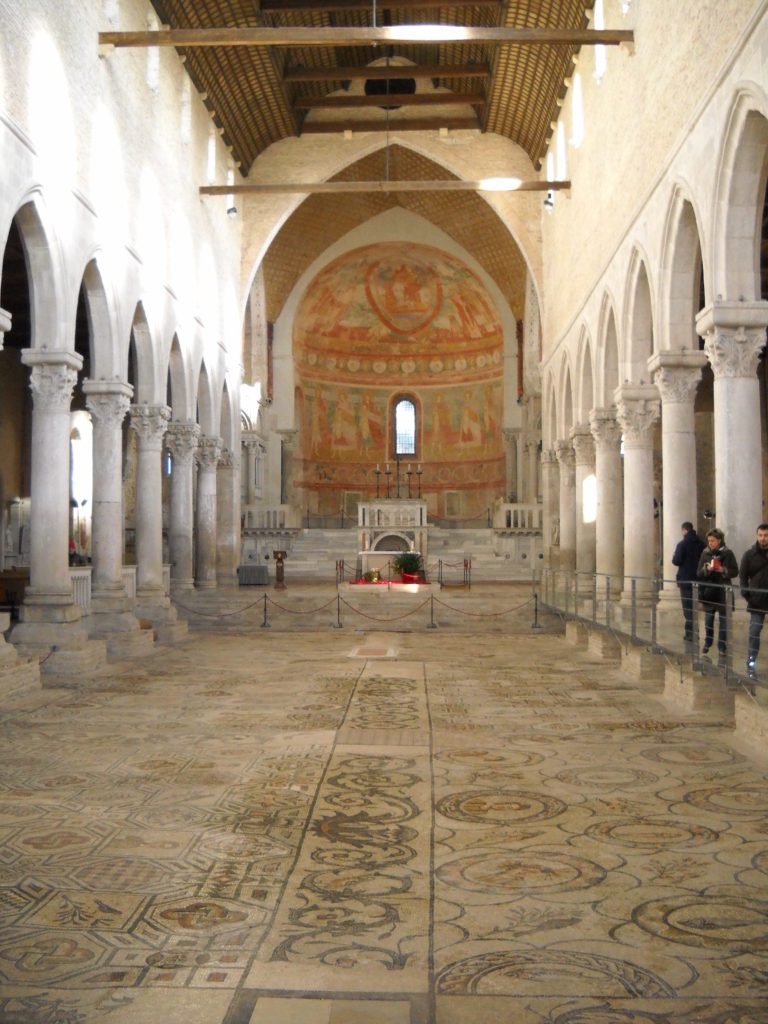
Among our cultural endeavors, we toured the town of Aquileia, a city originally established by the Romans, who first cultivated grapes in the area. Presently a UNESCO World Heritage site, Aquileia’s Basilica, built in 1000 CE, had much of its history lost until they undertook renovations in 1909 and discovered an amazing 4th century mosaic floor hiding underneath the more modern structure.
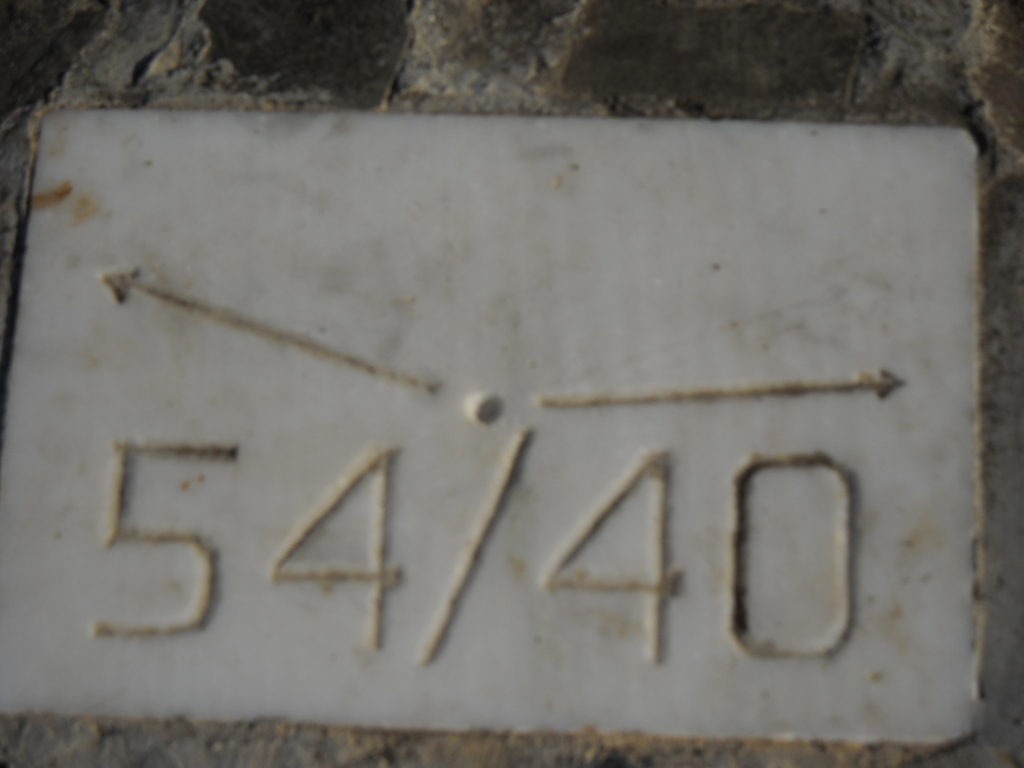
We also got a glimpse of the area’s war-torn history as we hiked along the mountain ridge of Sabotin, which served as an important part of the Isonza Front during WWI. Due to its topography, it was a key defensive point for the Austro-Hungarian army against the Italians in 1915 and 1916. As we trekked the rocky crest, I joked that if we fell off the mountain and died, we would be buried in either Italy or Slovenia, depending upon which side we fell. But, in all seriousness, this arbitrary border had kept families apart, pitting one against the other. Today, the Sabotin Peace Park honors those who fought and serves as a reminder of this historic period.
A further influence on Collio’s culture was the region’s roots in the Hapsburg empire. In fact, the area had been under Austrian rule until 1915 when it finally became part of Italy. This, coupled with its shared border with Slovenia, results in an interesting mix of cultures. Accordingly, local signage is often written in multiple languages – Italian, German and Slovene – and the cuisine is a blend of these national influences.
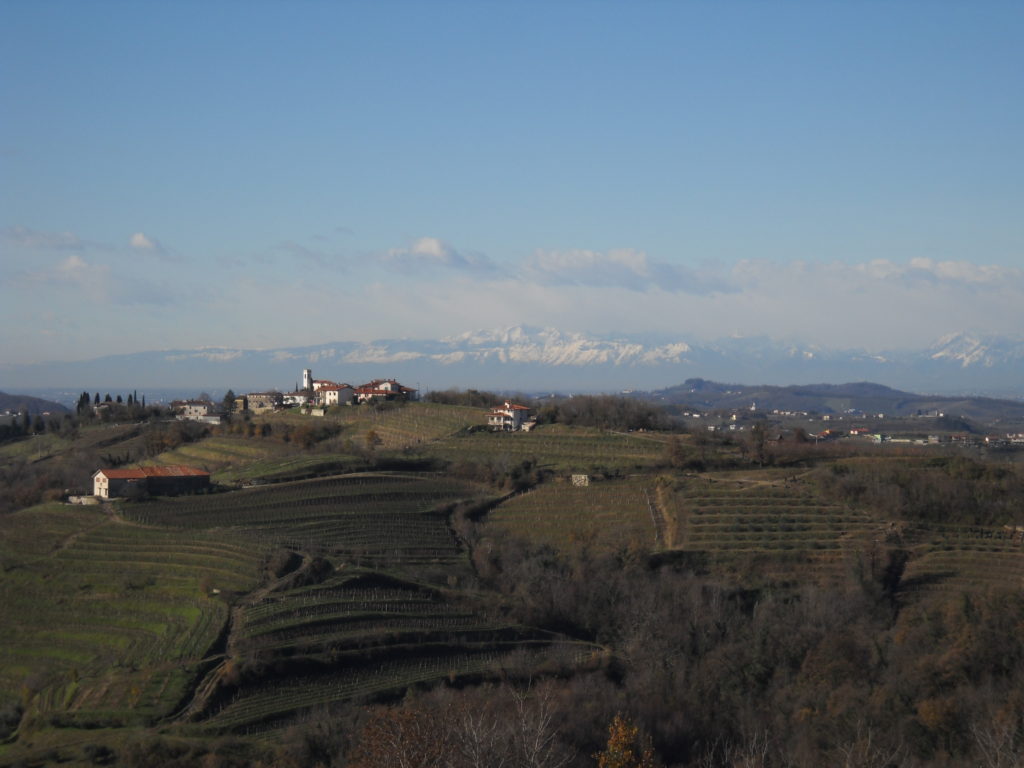
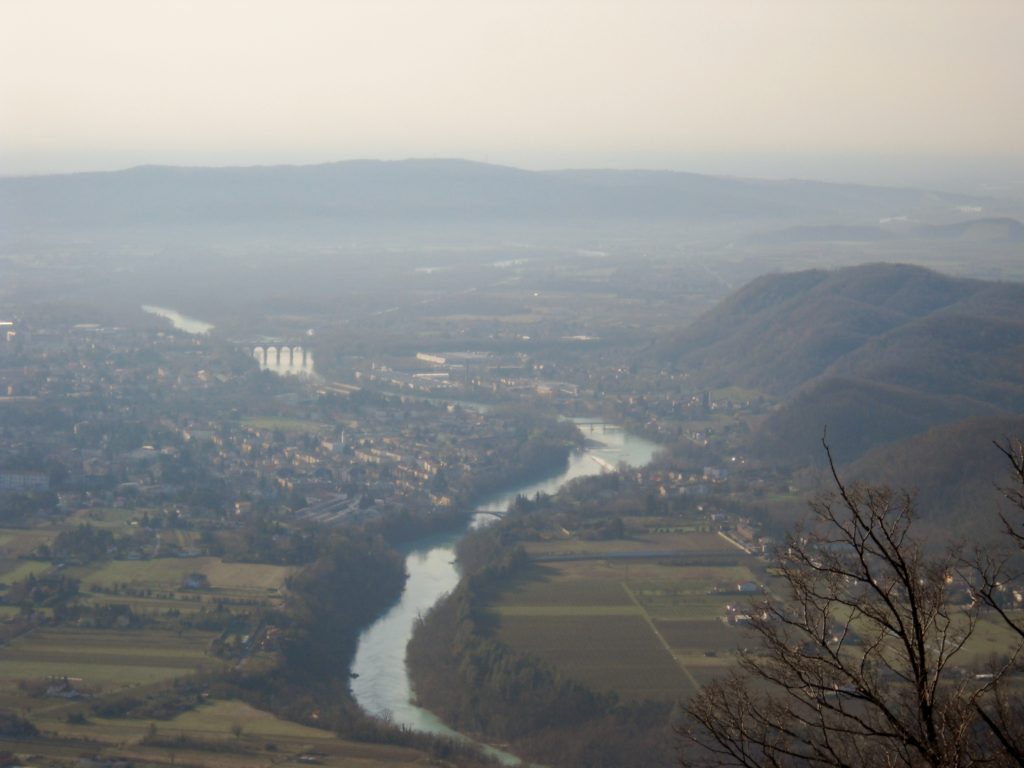
Nestled between the Adriatic Sea and the striking, Julian Alps, Collio is blessed with a moderate climate as the mountains protect the area from harsh winds, while its proximity to the sea makes it warmer than neighboring inland areas. Significant diurnal shifts ensure that the grapes retain their acidity while the soil imparts structure and minerality due to its composition of numerous layers of marl and sandstone (referred to as Ponca).
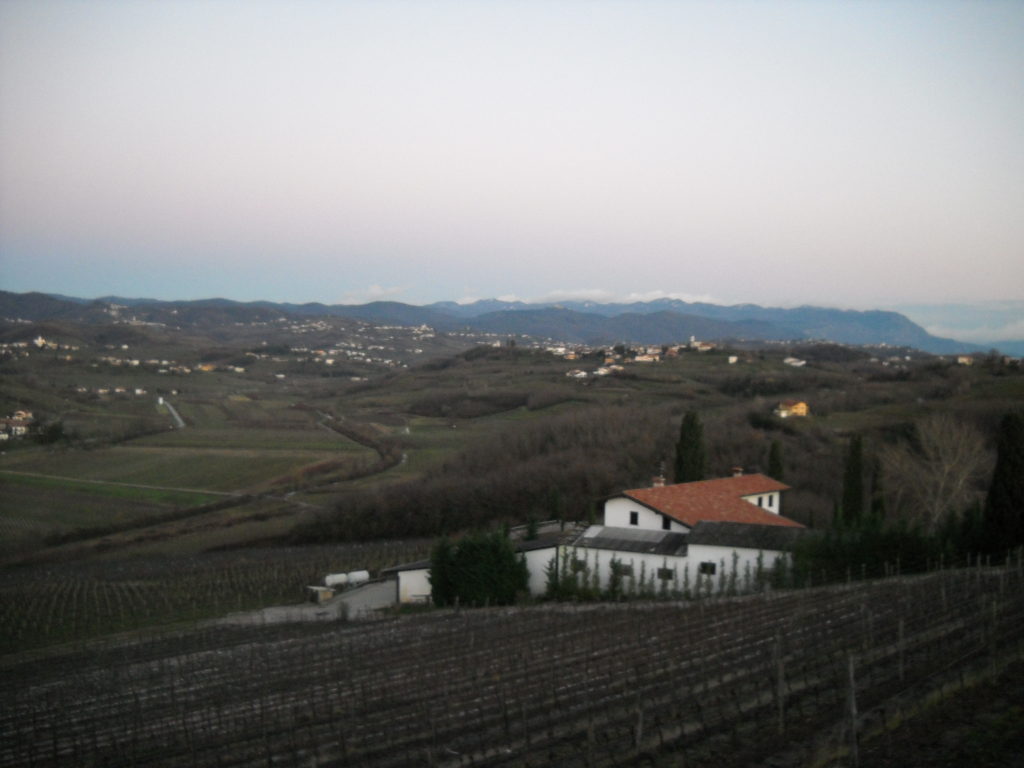
Part of the Friuli Venezia Giulia wine region, the C-shaped, Collio denomination is comprised of 7,000 hectares, of which 1,500 are devoted to viticulture. Within this small enclave, there are 350 wineries each growing an average of 2.5 hectares. Vines are grown exclusively on the hills (colli in Italian), with 17 different grapes cultivated. Primarily known for varietal, clean, complex and elegant white wines, which account for most of the production, Collio relies on both indigenous and international varieties.
The local Friulano, Ribolla Gialla, Malvasia Istriana and Picolit share a 2,000- year history, while the international grapes of Pinot Grigio, Sauvignon Blanc, Chardonnay, Merlot, Cabernet Franc and Pinot Bianco were imported to the area in the 19th century. Not surprisingly, Pinot Grigio and Sauvignon Blanc have established a strong foothold here due to their overall popularity worldwide. In addition to the 17 varietally labeled wines permitted in the Collio DOC, there are two others: Collio Bianco and Collio Rosso for white and red blends, respectively.
Led by wine journalist Matteo Bellotto and Mitja Sirk, a local sommelier, the tasting featured an overview of the region as well as a guided tasting of six wines. As Matteo noted, it is through wine and food that the locals speak and they were excited to have these wines speak to us. Moreover, at the end of the event, Matteo shared that we had started as guests, but having had this experience together, we were now friends.
All of the wines we tasted were from the 2019 vintage. This vintage was a particularly good one given the lack of rain in September. Consequently, the wine producers did not have to rush to harvest the grapes, giving them a long maturation on the vine. In fact, the area is one of the rainiest, more often forcing winemakers to pick in August. Yet, despite the challenges that this wet weather brings, many Collio producers are committed to practicing organic viticulture.
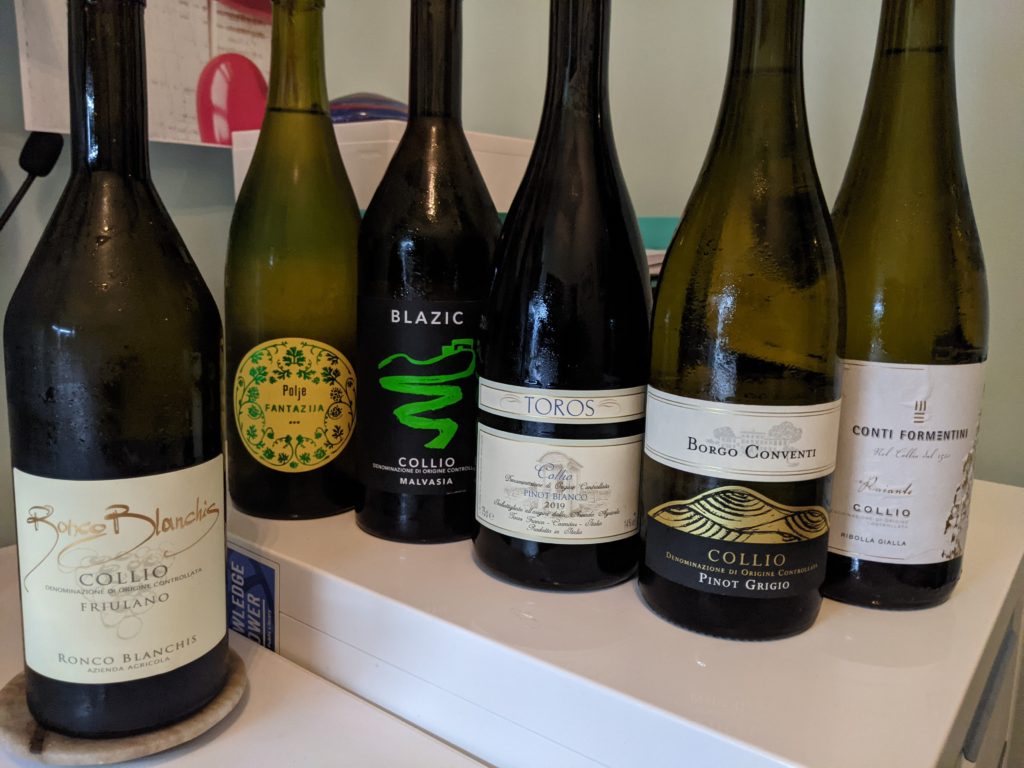
As we turned our attention to the wines themselves, we were advised that it was a tradition to taste the Ribolla Gialla first, given its high acidity and higher alcohol compared to other local wines. Its freshness prepares the palate for what is to come.
Conti Formentini Ribolla Gialla 2019, Collio, Italy
One of the oldest producers in the area, the Formentini family purchased a castle in San Floriano del Collio in 1520 and has remained in the area ever since. This variety is often connected with orange wines, but is also produced as a white wine.
Tasting Note: Aromas of yellow plum and apple greet the nose and persist on the dry palate, along with high acidity, medium+ body and long length.
Ronco Bianchis Friulano 2019, Collio, Italy
This winery is under the ownership and direction of Giancarlo Palla and his sons, Alberto and Lorenzo. Its name is derived from “Ronco”, from the Friulan word “fianco, or side of a hill” and “Blanchis”, white, the color of its wines. Previously referred to as Tocai Friulano, now just Friulano, this indigenous grape is prone to producing high yields, yet it still produces well balanced wines.
Tasting Note: This wine displays distinct floral notes joined by pear. It is dry, with medium acidity, medium body, and flavors of peach, pear, and floral, culminating in long length with a bitter almond note in the finish.
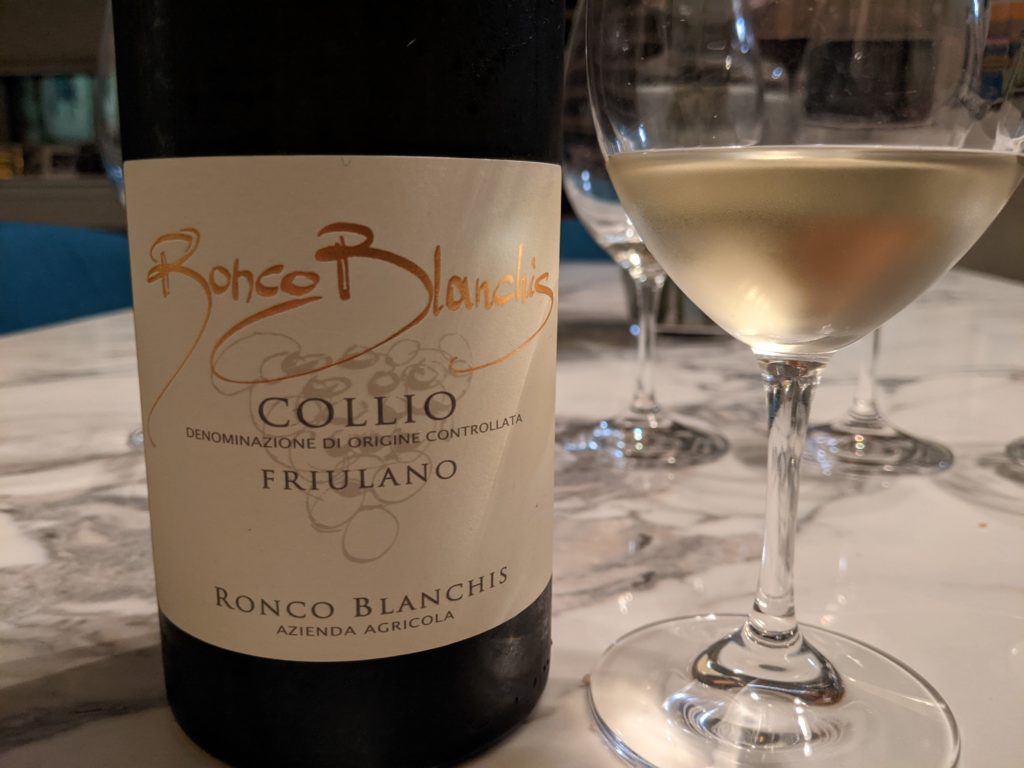
Blazic Malvasia 2019, Collio, Italy
This family run winery has been producing wine since 1923. Also grown in Croatia and Slovenia, as a variety Malvasia requires more talent and patience on the part of the winemaker.
Tasting Note: Redolent of stone fruits, this dry wine offers up rich and ripe peach and herbal flavors, good acidity, full body, nice length and a citrus note in the finish.
Tenuta Borgo Conventi Pinot Grigio 2019, Collio, Italy
Established on land that was previously a monastery, Borgo Conventi was founded in 1975. It was purchased by the Folonari family in 2001 and was more recently (April 2019) acquired by the Moretti Polegato family who also owns Villa Sandi, a well-respected producer of Prosecco and Prosecco Superiore.
Matteo explained that Pinot Grigio can often be misunderstood. In Collio, it carries the identity of the terroir and is not an everyday wine as it is in other regions such as those from Alto Adige and Friuli. By way of illustration, Matteo depicted Pinot Grigio from Collio as the Beatles, while Pinot Grigio from elsewhere as Shakira.
Tasting Note: This dry wine displayed a lovely freshness and minerality, with medium+ acidity, medium to full body, and long length.
Toros Pinot Bianco 2019, Collio, Italy
With a long history in the area, the Toròs family first came to Novali in the early 20th century. Today, the estate is owned by Franco Toròs, who has focused his efforts on modern winemaking.
Matteo suggested that the region is just beginning to understand the potential of Pinot Bianco as it finds its own evolution in the terroir. As part of his signature in producing this variety, Franco always uses a small percentage (<20%) of oak in its production.
Tasting Note: With a slightly woody note on the nose, this dry wine offered up medium acidity, full body, a woody undercurrent along with apple and long length.
Polje Fantazija Collio Bianco 2019, Collio, Italy
The Sutter family has been producing wine since 1933, initially in Piave. They now have the Polje estate in Collio, which derives its name “from the characteristic local karst sinkholes.”
While the Collio Bianco DOC presently permits a blend of indigenous and international grapes (as in this one which brings together Chardonnay, Ribolla Gialla and Sauvignon Blanc), this DOC will eventually be restricted to blends of indigenous varieties only.
Tasting Note: This wine has aromas of flowers and pineapple, while the use of wood in its production manifests as a toothpick characteristic on the full-bodied palate, culminating in long length.

